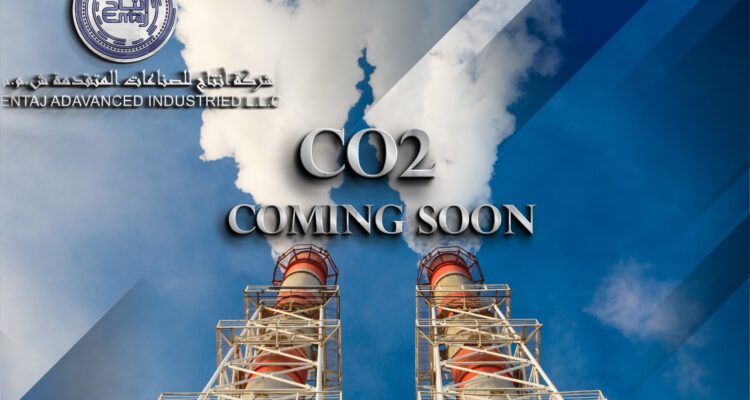شركة انتاج للصناعات المتقدمة ش.م.م

كل ما يجب معرفته عن ثاني أكسيد الكربون (CO2)
ثاني أكسيد الكربون هو أحد الغازات المسببة للاحتباس الحراري وهو المحرك الأساسي لانبعاثات الاحتباس الحراري. انبعاثات ثاني أكسيد الكربون2 من الأنشطة البشرية هي أيضًا المحرك الرئيسي لذلك ، لأنها تغير متوسط درجة الحرارة العالمية. في Breeze Technologies، CO2 يمكن مراقبتها باستخدام مستشعرات جودة الهواء الخاصة بنا. اقرأ المزيد لمعرفة سبب أهمية تقليل ثاني أكسيد الكربون2 الانبعاثات.
ما هو ثاني أكسيد الكربون؟
Carbon dioxide (CO2) is a colorless and non-flammable gas at normal temperature and pressure. A molecule of CO2 يتكون من ذرة كربون واحدة وذرتين من الأكسجين. كو2 يلعب أيضًا دورًا في دورة الكربون للأرض ، وهي مجموعة العمليات التي تدور الكربون بأشكال عديدة في جميع أنحاء البيئة.
CO2 هو غاز مهم للاحتباس الحراري (دفيئة) يتم إطلاقه من خلال الأنشطة البشرية مثل إزالة الغابات وحرق الوقود الأحفوري. بدون CO2، سيكون كوكبنا بيئة غير صالحة للعيش لأنه سيكون شديد البرودة. كو2 يمكن أيضًا إطلاق الانبعاثات من العمليات الطبيعية مثل التنفس والانفجارات البركانية.
هل ثاني أكسيد الكربون ملوث للهواء؟
لا يعتبر ثاني أكسيد الكربون ملوثًا للهواء ، حيث يتواجد بشكل طبيعي في الهواء. ومع ذلك ، فإن CO2 زاد التركيز في الغلاف الجوي بشكل كبير بسبب النشاط البشري. ثاني أكسيد الكربون هو غاز من غازات الدفيئة. بجانب أكسيد النيتروز (N2O) والميثان (CH4). تعتبر الكميات الصغيرة من غازات الدفيئة آمنة للتنفس ، لكن الزيادة في حرق الوقود الأحفوري تخلق تأثيرًا في الاحتباس الحراري. كما تؤدي التغييرات في استخدام الأراضي بسبب الزراعة والحراجة إلى زيادة انبعاثات غازات الاحتباس الحراري.
تؤدي الزيادة في انبعاثات غازات الاحتباس الحراري إلى استمرار ارتفاع متوسط درجات الحرارة ، مما يؤدي إلى ارتفاع درجة حرارة مناخ كوكبنا. يؤدي ما يسمى بتأثير الاحتباس الحراري إلى زيادة درجة الحرارة العالمية وينتج عنه سلسلة معقدة من الأحداث المعروفة باسم تغير المناخ العالمي. لا يؤدي تغير المناخ العالمي إلى زيادة عامة في درجات الحرارة فحسب ، بل يؤدي أيضًا إلى تغيير أنماط الطقس والمناخ العام على الأرض.
في الهواء الطلق ، CO2 تشتت للغاية مع مستويات لا تختلف كثيرًا حتى من خلال منظر المدينة. في الداخل ، القصة مختلفة: CO2 هو أحد المؤشرات الرئيسية لجودة الهواء الداخلي. نظرًا لأن البيئات الداخلية عبارة عن أنظمة إيكولوجية مغلقة ، يمكن أن تتراكم انبعاثات الكربون من الأشخاص والمصادر الأخرى بسرعة إلى مضاعفات ثاني أكسيد الكربون الطبيعي في الغلاف الجوي2 concentration.
What are sources of carbon dioxide?
There are both natural and anthropogenic (man-made) sources of CO2 emissions. Natural sources include decomposition, ocean release, respiration, and photosynthesis. Respiration, the process by which organisms liberate energy from food, also emits CO2. Photosynthesis, the biochemical process by which plants and some microbes create food, acts as respiration’s natural counterpart by drawing CO2 from the atmosphere.
Man-made sources of CO2 mainly consist of the burning of fossil fuels, such as coal, oil and gas, by directly releasing the stored carbon into the air while releasing the stored energy as heat. Cement production emits CO2 when using energy from fossil fuels to fire the cement’s base materials in a kiln, and the chemical reaction produced from the mixture when it is exposed to heat. In addition, deforestation also releases stored carbon from forest landscapes into the atmosphere. The reverse process of growing forests and thereby storing surplus carbon in the trees’ trunks and roots is called “sequestration.” Other land use changes such as agriculture and forestry contribute to about 23% of anthropogenic emissions of CO2 as well as other air pollutants.
What is the health impact of carbon dioxide?
Exposure to CO2 can produce a variety of health effects. These may include:
- Headaches
- Dizziness
- Restlessness
- A tingling “pins and needles” feelings
- Difficulty breathing
- Sweating
- Tiredness
- Increased heart rate
- Elevated blood pressure
- Coma
- Asphyxia
- Convulsions
The levels of CO2 in the air can also have various potential health problems, depending on the ranges as follows:
| CO2 LEVEL | AIR QUALITY INDICATION |
|---|---|
| 419 ppm | Average atmospheric CO2 concentration |
| 419–1,000 ppm | Typical level found in occupied spaces with good air exchange |
| 1,000–2,000 ppm | Level associated with complaints of drowsiness and poor air |
| 2,000–5,000 ppm | Level associated with headaches, sleepiness, and stagnant, stale, stuffy air. Poor concentration, loss of attention, increased heart rate and slight nausea may also be present. |
| 5,000 ppm | Permissible exposure limit for daily workplace exposures. At these level, unusual air conditions where high levels of other gases could also be present. Toxicity or oxygen deprivation could also occur. |
| 40,000 ppm | Levels are immediately harmful due to oxygen deprivation |
What is the environmental impact of carbon dioxide?
CO2 emissions have strong evidence as a greenhouse gas to cause global warming. Climate change will have a range of impacts that causes an increase of the global sea level, extreme weather shifts, shifting wildlife populations and habitats, and a range of other impacts.
One of the human sources originates from the urbanization process. Urbanization is a dynamic process that changes rural areas into urban areas. The built environment provides infrastructure and facilities for human activities but also plays a considerable role in rising CO2 emissions in the building sector. The environmental impact of this sector can be categorized into ecosystem, natural resource, and public impacts.

